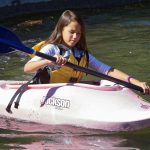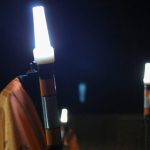Kayaking is an excellent form of exercise and has many physical and mental health benefits. What are those? Keep reading to find out.

The right paddling technique can make all the difference between a great day on the water and a miserable one. There are two major paddling styles in kayaking: high-angle paddling and low-angle paddling. They have different uses and call for different paddles. Fortunately, deciding on which style to use and what type of paddle you’ll need is easy once you know the difference.
The difference between high and low angle paddling is the angle at which your paddle hits the water. High-angle style helps generate more power, while low-angle technique is less demanding and can keep you going for hours. If your upper hand goes above your shoulder, that’s high-angle paddling.
Read on to learn more about high-angle vs. low-angle paddling and how to choose the best style for you.
The Two Styles of Paddling: High and Low Angle
Kayak paddling can be divided into two methods: High and low angle. Each of them has their own associated technique, application, limitations, and benefits. Which one you use will be determined by what kind of kayaking you plan to do, your skill level, and how fit you are.
Why Does it Matter How You Paddle?
One of the many great things about kayaking is the variety of ways you can use your boat. There are kayaks made for recreation, touring, whitewater, fishing and traversing the sea. The different conditions at play in each of these environments will place a different set of demands on you, the kayaker. This is where the importance in paddling technique comes into play.
Low-Angle Paddling Technique
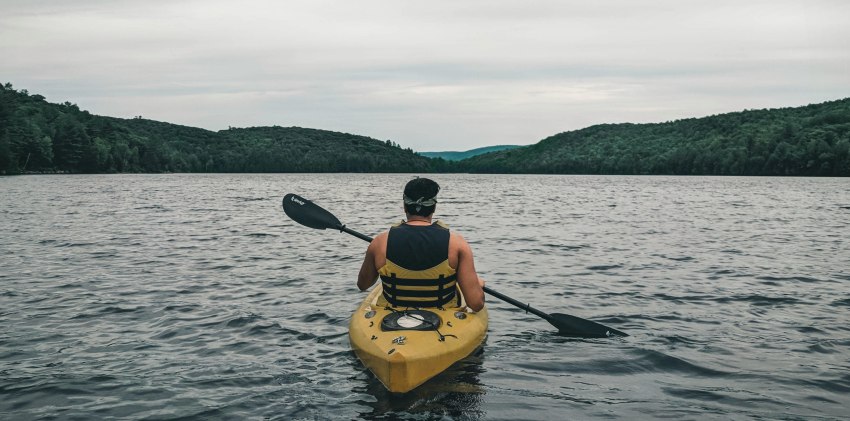
Low-angle paddling is all about efficiency. This method is much less demanding fitness-wise and easier to learn. This makes it better for leisurely paddles, long days on the water, light touring and those new to paddling. If you’re just out exploring or sightseeing, low angle is the way to go.
The major advantage of a low angle stroke is the efficiency of the movement. This makes it more comfortable and puts less strain on your muscles and joints. Because of this, low angle paddling is ideal for anyone with injuries and fitness or mobility limitations.
One drawback of a low angle paddle is that straight tracking becomes more difficult. This is due to the more lateral movement of the paddle in the stroke and the longer length of the blade, which will cause the kayak to move side to side slightly. The movement is not so drastic that it is impossible to track straight, but it will require a little more compensation when aiming your boat.
High-Angle Paddling Technique
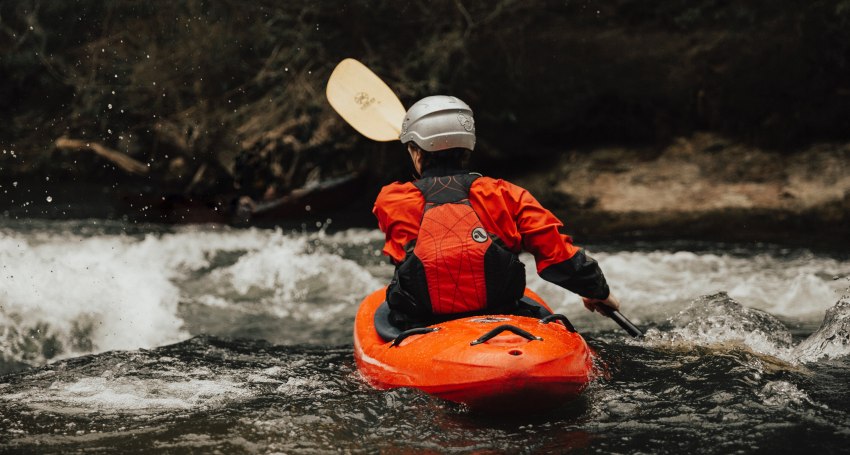
High-angle paddling is a more aggressive style that prioritizes performance. A high angle stroke will give you much more power and speed. You use a high-angle paddling style when you need to move quickly, weave your way around obstacles or catch a quick-moving wave.
Here’s a list of activities where you high-angle paddling is common:
- Whitewater kayaking is a perfect example of an environment in which you need to move quickly and in different directions. In whitewater kayaking, high angle paddling is used almost exclusively. Without the ability to avoid obstacles and move faster than the water, you can easily find yourself in a bad situation!
- Sea kayaking is very different to whitewater, but also calls for a higher angle stroke. Due to their width and length, sea kayaks are perfect for high angle paddling. A narrower hull makes access to the water much easier than a wider, more stable boat. Sea kayaks are also made to track very straight and cover long distances which again suits high angle paddling.
- Kayak surfing is another instance where a high angle is called for. Catching and riding waves requires you to move faster than the water. You can’t afford to cruise along at a relaxed pace when a wave is rushing towards you! In this environment, only high-angle paddling will do.
There are other situations in which you might choose to use the high-angle paddling style, such as if you’re carrying a very heavy load in your boat while kayak camping and you need to generate a lot of power to keep it moving. Low angle paddles simply won’t be able to create the horsepower to keep your boat moving at a reasonable speed.
Kayak anglers may also prefer to use the high-angle paddling style due to their higher seated position, which can make access to the water awkward without a very long paddle.
Anyone looking to improve their fitness through kayaking would also be better served adopting a high angle paddling style, as it is much more demanding on both the muscles and the cardiovascular system.
The main drawback with high angle paddling is that it requires more skillful technique. This will take more time to learn. Without the requisite technique, high angle paddling will quickly become too tiring.
As you can see, both methods have their own advantages as well as their limitations. There can be some overlap in paddling styles in certain instances. For example, on flat, still water, there’s nothing stopping you from using a high angle if you feel like moving a bit quicker.
High angle paddling is not better than low angle paddling, only a better fit for certain types of kayaking. The same can be said for low angle paddling.
High and Low Angle Paddles: How Are They Different?
Kayak paddles can be broadly divided into three different categories: Recreational/touring, whitewater and fishing. Within the recreational/touring category and the fishing category you can find both high and low angle paddles. These types of kayaking can be approached in different ways which leaves room for individual preference in paddling style.
All whitewater paddles are high angle paddles.
Even though paddles will always be made specifically for either high or low angle both can work for either style. A high angle paddle will not be as effective for low angle paddling and vice versa, but there is some crossover.
What is the difference between a high and low angle paddle?
The main difference is in the shape of the blade. Identifying whether a paddle will be obvious once you know what to look for:
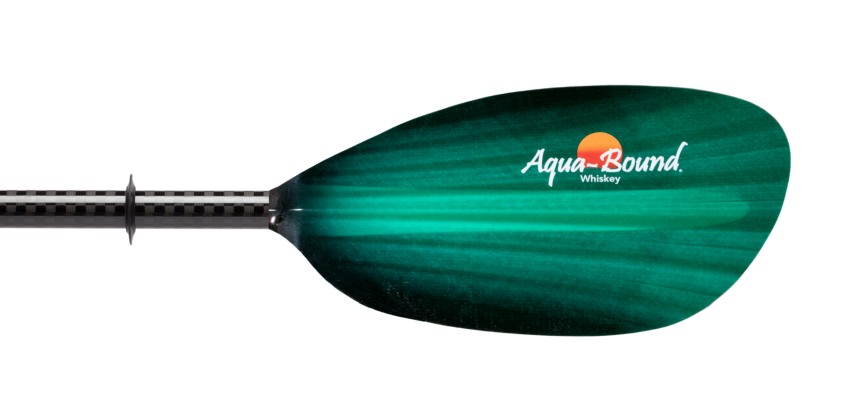
High angle blades are shorter and wider than low angle blades. The larger surface area of the blade provides more contact with the water, allowing for a more powerful stroke.
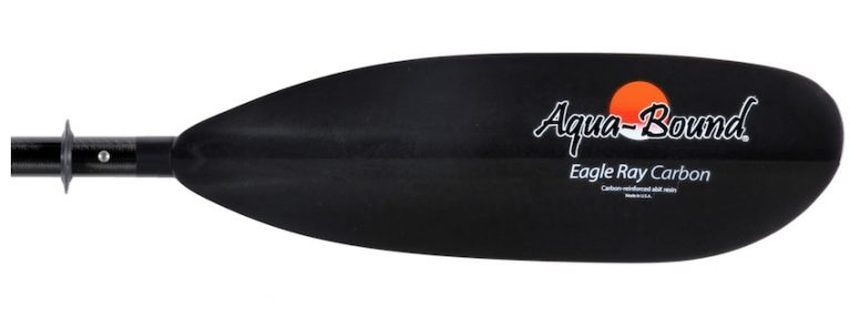
Low angle blades are longer and narrower than those of high angle paddles. This gives the kayaker an easier pull through the water. With less resistance there is less strain on the muscles and joints, making it ideal for an easy day on the water when covering distance or getting somewhere quickly is not so important.
Both high and low angle paddles will come in various lengths. Choosing the appropriate paddle length has more to do with the height of the user and the width of the boat than anything else.
What Type of Kayak Paddle Should I Buy?
Which paddle you choose will really come down to what type of kayaking you intend to do. Do you mostly want to cruise on slow moving rivers and lakes? Maybe some light touring on occasion? Go with a nice low-angle paddle.
If you’re looking to do something more intense like whitewater kayaking, flying off waterfalls or sea kayaking, go with a sturdy high angle paddle.
Are high angle or low angle paddles more expensive?
Usually both types of paddles will cost about the same. The material and length of a paddle are generally what determines how much you’ll pay. There are budget-friendly options as well as higher quality options costing up to several hundred dollars in both styles. Buying the best paddle you can afford is always a good option. As the old saying goes, you get what you pay for.
A higher quality paddle will not only be more durable, but will be lighter as well. Even though the difference in weight sometimes comes down to just a few ounces, over the course of several thousand strokes and several hours it will start to add up!
Next to your kayak itself, a good paddle is the most important piece of equipment you’ll want to invest in. If you can afford it, buying a better paddle upfront is the best choice, as it will save you the cost of needing to replace a lower quality paddle when you inevitably outgrow it.
What if I do more than one type of kayaking?
Because paddles are made specifically for either high or low angle paddling, neither will do the job of the other as efficiently. If you plan to do some whitewater kayaking or surfing at some point, but plan to mostly paddle on lakes and tame rivers, you could probably get away with only buying a high angle paddle with a less aggressive shape. Otherwise buying two separate paddles, one for each purpose would be the best option.
A low angle paddle can’t really be used effectively in any kind of whitewater rated higher than class I or heavy surf and can potentially be dangerous to do so. For safety reasons, if you’re planning to do any amount of whitewater kayaking or surfing you would be best advised to only use a high angle paddle.
Obviously very short runs through easy rapids won’t be an issue regardless of your paddle. Always be sure you know what you’re getting into before heading down a river to avoid ending up in a risky situation.
On the other hand, a high angle paddle can be used safely for anything that a low angle could be used for but will suffer in the efficiency department.
High/Low angle paddling is uncomfortable, can I try another style?
Of course you can. But again, consider how you’ll be kayaking first and foremost. There is some overlap in technique, but as previously mentioned in situations like fast-moving whitewater, low angle simply won’t work.
If the way you’re paddling is causing you discomfort the first place to start would be checking your technique. Any type of paddling shouldn’t be uncomfortable, assuming you don’t have a pre-existing injury of some sort. Try talking to a qualified instructor to ensure you’re not doing something incorrectly. Using poor technique over time can cause unnecessary wear and tear on your joints.
Conclusion

Kayaking is all about having fun! Don’t overthink your paddling style. Just remember, the paddling style you use and the type of paddle you purchase should be determined by how you plan to use your kayak. The rest just comes down to how much you have to spend on a paddle. Knowing what you need will save you time, effort and money. Now that we’ve got that sorted, get out on the water and enjoy yourself!


